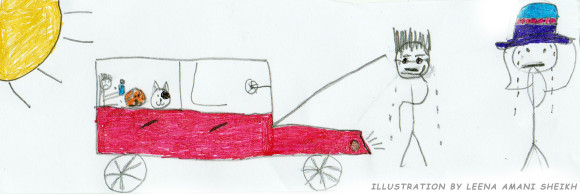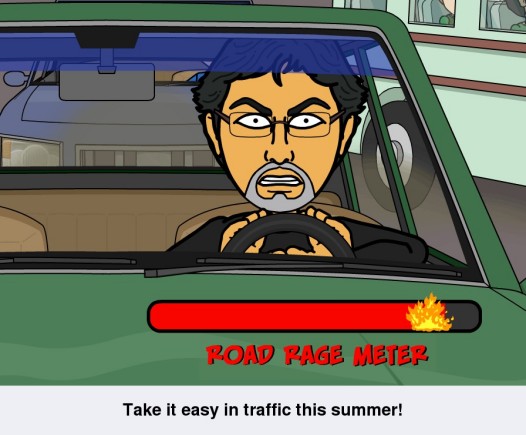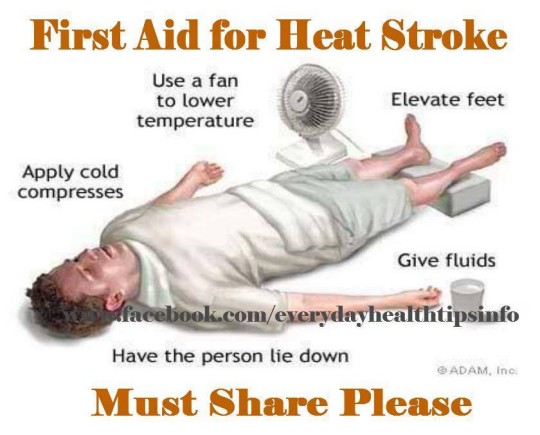Hot weather driving tips
Our essential guide to motoring this summer as temperatures soar to 50 degrees and over
By Shahzad Sheikh

21st of June marks the summer solstice – that’s when summer officially begins, running through to the autumn equinox on 23rd September.
So if you think it’s hot now, be advised that it will get hotter than a smouldering Angelina Jolie (from ‘Wanted’) serving flaming Vato Loco laced with Ghost Chilli at a bar deep in the muggy back alleys of hell frequented by the fire-belching El Diablo himself, whilst in her birthday suit.
Pictured that? Phew! Have a sip of water, turn up the A/C, and take a moment or two to calm down. Do NOT, whatever you do, operate heavy machinery, attempt complex neurosurgery or… well… drive a car.
See what I’m getting at? Heat is dangerous and getting hot and bothered is not conducive to sensible, responsible and safe driving. And that’s just the human part of the equation. What about the car?
Road surface temperatures in the midday sun can reach over 60°C and an unshaded parked car gets hot enough to bake cookies inside (no really, try it!) as the mercury soars above 90°C.
Imagine what those temperatures are doing to the amalgam of metal, plastic and rubber to which we entrust our very lives each time we venture away from home – ever heard of ‘expansion’ and ‘contraction’, or just plain old ‘melting’ for that matter?
So here’s our must-read-and-remember hot weather driving tips to surviving the summer out on the roads:

The driver and passengers
The first tip is – don’t drive unless you really have to. The second tip is – don’t drive unless you really have to. The third tip is – don’t drive unless you really really have to.
No really, at the height of the summer heat, when the temperature on your dashboard is the top part of 40s or even creeping past the 50 mark, cut down the amount you drive to the minimum. I know that goes contra to everything we stand for here at Motoring Middle East, but then we want you to ENJOY motoring, not turn it into a survival ordeal.
Try to park your car in a shaded area if possible. Ever heard of the greenhouse effect? Heat gets in through the windows and is absorbed into the cabin’s materials, but the glass acts as an insulator and won’t let it back out – the result: your car is an oven and you’re the nicely marinated main-course-to-be. Oh and remember – the sun moves. Will your car still be in shade when you return?
Use sunshades if you have them to block up the windscreen – it’ll protect your dashboard as well as limit the heat getting in your car. You may even be able to actually hold the steering wheel when you get in rather than your skin melting and fusing to the rim (consider getting a steering wheel cover, though not leather!). You can also purchase side shades with suction cups – ideal for the children.
But PLEASE remember to remove them when you’re actually driving. I’ve seen people speeding down the highway with the sunshades still in place in the windscreen. I’m sorry but Superman is not real, and nor is X-ray vision, so you’re only endangering your life and that of other road users. Stop it!
If you have remote start – use it. Presumably you’ve left the a/c and climate control on, so give it a few minutes to run before roasting your backside on the hot plates… sorry, seats.
Never ever, EVER, leave children or pets in a parked car on their own. You might think it okay to leave them with the car on and the a/c running, but with young children and animals that’s not really a wise option either.
What if there is a failure and the engine shuts off? What if the kids start pretending to ‘drive’ and mess with controls? What if the dog inadvertently pushes the transmission into Drive? The potential for disaster is just too great. Just never leave children unattended. Period.
Even leaving the window open is no good – the temperature inside the car will still increase. In a hot car you can DIE from heat stroke. It’s sadly not uncommon to read tragic news stories in the summer about children succumbing after having been ‘forgotten’ in a car. I would go as far as to say that if you do see a child left alone in a car, call the police.
Personally I’m vehemently anti-window tinting, particularly dark tints. But then the technology for window film from some of the quality suppliers means that it doesn’t have to be heavily dark tinted to reduce the amount of solar heat entering the car.
Ask about heat-rejection and UV protection when selecting the tinting film. The tints are for keeping the inside of your car cool and you safe, it’s not about pretending you are Secret Service or covering up extra-curricular in-vehicle activities that might require privacy. C’mon. Get a room.
Keep calm and drive – The heat can cause lethargy and tiredness which slows reaction times and reduces alertness. Slow down and take more care (higher speeds put more mechanical strain on a car in hot weather anyway – leading to a higher chance of breakdowns). Making mistakes can also lead to or cause road rage.
Road rage is one of the biggest causes of accidents on the road. You never ever want to have an accident: you don’t want to risk death or injury, you don’t want to damage your car, you don’t want the hassle of insurance claims and getting repairs done. But most of all, in the summer, you don’t want to be stuck somewhere in the heat waiting for the police to turn up and write you a report, without which you can’t get your car repaired.
You want to drive safe. And for that you need a cool head, alert reactions, and the ability to be the bigger driver, let it go and err on the side of caution. But when temperatures rise, people get hot tempered and things can get out of control very quickly indeed.
So if someone cuts you up, back off and let them; if someone mouths something rude and makes a rude gesture, smile politely and carry on; if someone has made a blatant mistake and is blaming you, just apologise instead and allow them to continue their self-delusions; if you’re having a heated debate with your spouse just agree with them and drive on; and if… well you get the idea. Just chill dude, don’t let anything get to you. Stay cool and drive safe.
Stuff to keep in the car
Water! Leave some bottles of water in the car, both for humans and the vehicle, should it overheat. If there’s space, keep the bottles in a cool box. Additionally the cool box will be handy if you’ve been out shopping and it will take a while before you get the frozen stuff back to your fridge – you don’t want meat going off!
Phone. Fairly obvious I know, we all have them. But make sure they are charged and you have a charger cable or a portable charger (the last is particularly useful because if your car itself should die, it won’t be able to charged your phone either).
Hats and sunglasses. You probably should keep these with you at all times during the summer. Both protect you from the sun. Keep an extra pair of sunglasses in the car. Avoid wearing polarised sunglasses – I know they reduce glare and some suggest they are good for driving, but many modern cars have digital displays that become harder to see through polarised sunglasses. Most importantly check to make sure that you look cool in them (well you wouldn’t be seen dead in them otherwise, which is what could happen).
First Aid Kit. You can buy these in pharmacies, supermarkets, even some petrol stations and they are definitely worth keeping in your car if you don’t already have one. Consider including sunscreen, bandages and antiseptic, ice packs or cooling packs, painkillers, antihistamine, thermometer, rehydration salts, towels, tissues and kitchen paper towels, spare plastic bags. Oh maybe also a small book on first aid so you know what do with all this stuff!
Emergency kit. Other items that are definitely worth keeping in your car include jumper cables, torch (with extra batteries), tow-rope, heavy-duty gloves, kitchen towels, small portable battery-powered fans (with extra batteries), basic tool kit (which should already be in the car), owner’s manual for the car (should you need instructions on jump starting or changing a tyre), some extra cash to pay for fuel and water should you run out or cards not be accepted; reflective triangle and of course a fire extinguisher.
Oh and don’t forget to familiarise yourself on how to use it (you might not have time as you frantically fumble with it in if, God forbid, things flame up. And make sure it’s the correct kind of fire extinguisher.
What NOT to leave in the car. Stuff that will melt – chocolate, frozen foods, plastic items (such items should be left in an exposed part of the cabin), plus sweets and gum, candles, crayons, lipstick, cleaning solutions, sunscreen bottles (keep it in the boot or use sachets), cassettes/CDs/DVDs etc.
Also be sure not to leave any foodstuff in a parked car – if there is frozen meat in the car for a few hours and your car will stink forever! It’ll be a sickly smell that’ll make you want to throw-up and then you’ll have to sell your car, lose money on depreciation, end up broke, and find yourself sweltering on packed commuter bus feel nauseous from all the potent body odour. See how quickly things escalate?
Don’t leave cans of fizzy pop in the car either, cause they can go off and leave a spectacular mess that can never been cleaned. Take out your interior and exhibit it in an art gallery, you might be able to sell it as art at least. And as pointed out by a reader below in the comments section, don’t leave a butane lighter in the car, as that could explode (Thanks to Thomas for that tip).
Heat stroke
Be in no doubt, heat stroke or sunstroke can kill. It can also cause damage to the brain and internal organs. Symptoms include headaches and dizziness; lack or sweating and red, hot and dry skin; weakness and/or cramps; nausea and vomiting; faster heartbeat and rapid breathing; seizures; confusion, disorientation, staggering and of course fainting.
If you suspect someone has heat stroke: call the emergency services or take them to a hospital immediately; get them into a cool and shaded environment; remove unnecessary clothing; fan air over them and wet their skin; apply ice packs or ice if available to the neck, armpits, groin and back; if possible immerse them in cool water.
If you need to, find a grocery shop or supermarket and let them sit in the fridge – the shop owner will not be happy, and you may have to end up buying everything in that fridge, but you need to get the victim’s temperature down to save their life!
How to look after the car
You’re car has a soul, it lives. I know it, and you know it, that’s why you read MotoringME.com. Your car is your faithful companion and dependable buddy. How do you think it’s getting on sitting out there under a harsh and intense sun?
Hot weather is tough on your car, not only because of the impact it’s having on the metal, the plastics and the rubber parts of your vehicle, but also as it puts extra stress on cooling, batteries, tyres and the air conditioning system.
So you need to look out for it. Prepare it for the hot months and make it as comfortable as possible. Scroll up for info about sunshades and emergency kit to keep in your car, for the rest, scroll down.
Cooling systems
Your body needs water, the car needs water. Or rather it needs a 50:50 mix of coolant and water. Your engine produces very high temperatures when it’s running; coolant circulates around the drivetrain and draws that heat away. If the cooling system fails, your engine will overheat. Catastrophic overheating will cause your engine to fail and could mean some major bills to repair gaskets at best, or replace the whole engine at worst!
The coolant in your radiator should be flushed and replaced periodically. Check the level by examine the plastic overflow bottle – if you need too, top it up with the correct fluid. DO NOT open the radiator cap when the engine is hot, or you could get a massive fountain of steaming hot liquid bursting out right in your face. You’ll end up looking like Freddy Kruger and will scare little children for the rest of your life.
Also on a cool engine, check the hoses – if they are too brittle or too spongy, you might want to consider replacing them. Check the connections, tighten them if they are loose. Is the cooling fan working? It should come on the moment you turn the a/c to maximum.
When driving keep an eye on the warning lights and temperature gauge. If you’ve been driving hard and the engine starts to overheat, sometimes just slowing and keeping engine revs down will be enough to restore a lower temperature – I’ve had this happen when charging uphill a few times (another sign is that the a/c might stop cooling).
Remember that air flow is needed to take heat off the radiator and cool things down. If you’re stuck in traffic and the temperature rises, put the car in neutral and increase the revs just slightly above idling, as this may help to get the coolant circulating.
If this doesn’t work then you need to stop in a safe place and let the car cool down. One trick is to turn the a/c off and turn the heater up to full, as this also soaks the heat off the cooling system – leave your windows open and obviously step out of the car as it will get intolerable in there. Otherwise just switch it off and wait half an hour.
Should things get extremely hot you need to immediately stop the car in a safe place away from traffic and turn it off. DO NOT open the radiator cap. DO NOT pour water over the engine or radiator (not unless it’s on fire of course), the sudden change in temperature can damage the cooling and engine further.
Engine
Like the coolant your engine depends on oil to run smoothly, cleanly and to stay cool – think of oil as the blood of an engine. Except it’s not red. Of course.
Check the oil: make sure it’s clean and at the right level. Replace it according to the manufacturer recommended intervals – fresh oil increases lubrication protection. A heavier viscosity oil and synthetic oil can help during high temperature running, but check with the manufacturer if it’s okay to use in your car first. Also consider changing the oil filter.
While you’re at it, check the other fluid levels too including transmission fluid, power steering fluid and brake fluid.
Tyres
I was in the desert once and the surface was so hot that the bottom part of my heavy duty boots simply came off – the rubber and glue had just melted. Your car’s tyres are its boots and are having to cope with far great extremes.
The importance of tyres cannot be understated – for all the car’s mechanical and safety systems, the one thing that keeps your vehicle in contact with the ground are the tyres, otherwise you might as well be flying. You rely on them completely to go, to stop and to turn. They are crucial.
So check them! At least once a month, even when the weather is not so hot. Make sure they are at the correct pressures. Under-inflated tyres experience increase road friction, which of course makes them even hotter – they can also increase braking distances and are prone to wear out quicker.
Over-inflated tyres are just as dangerous as air expands with heat and could also burst, they can also reduce the grip and affect handling. Try to check tyre pressures when they are cold or the car has not been driven for a couple of hours.
Examine the outside of the tyres too, the tread pattern should be clear and deep. Baldness might be cool if your Bruce Willis, but it’s bad if you’re a tyre. Check the wear indicators on your tyres (normally in the main grooves) and look for uneven wear as you might need wheel alignment. Any lumps, bumps, bruises, cracks or cuts are damage and you should probably replace the tyre. Don’t forget to check the spare, if your car has one. If not make sure you keep a tyre repair kit in the car.
You can also check the tyre manufacture date – older tyres are more likely to fail in hot conditions as the rubber degrades over time. Some tyres also give a temperature grade on the sidewall. Take a look at the valve caps too. Metal caps might be classy, but in very hot conditions they are harder to hold and remove, and can fuse onto the valve itself. Always buy new tyres, not remoulds.
At an ambient temperature of 45°C the temperature of a tyre can reach up to 70°C and at speeds of over 100kph this can rise to 110°C, which is extremely alarming when you realise that tests have show tyres can explode at 130°C.
And talking of road temperatures, tarmac can get up to 60°C and retains heat even after the sun has gone down. Beware of ‘Bleeding Tar’ when the black top gets so hot that the tar ‘bleeds’ onto the surface and can make it slippery.
Battery
We take batteries for granted, until the Wii remote stops working right in the middle of a game and you have to rush out and buy new ones! Similarly we don’t give much thought to the battery in our car, and are always very astonished when it chooses to stop working – how dare it?!
But the battery has a tough life, especially in a hot climate, and should be changed every two to three years. Most batteries are now of the sealed maintenance-free variety so you don’t have to worry about checking the fluid levels, but do take a look at it externally to make sure it hasn’t cracked or is leaking. The terminals should be clean and clear of corrosion.
Air conditioning
Last but by no means least of course – is the air conditioning system. Maybe not so vital to the car, but essential if you plan on actually going anywhere in it. Check it, get it checked. Make sure it blows cold air – not just air – or the refrigerant may need charging. You should also get it checked for leaks. It’s also a good idea to get the cabin air filter replaced.
Remember that the a/c will be way less effective if you have a window open. Also in traffic the a/c can use up to 20% more fuel – make sure you have a full tank of petrol before embarking on any long journey.
Have we missed anything from our Hot Weather Driving Tips? Let us know in the comments section below – share your experiences.
By the way this needs more illustrations – create your own and send them in. No prizes, but we’ll use the best ones on this page!





Dear Shahzad
I just wanted to thank you for the help on the Hummer oil leak the other day.
I enjoy your website and the hot weather article was awesome. You may want to mention that butane lighters can explode in a hot car too, with serious potential for a fire. Also a minor typo on the heat stroke section I think it was cramps that was intended not craps. Good for a chuckle though. I hope I have not offended you, I just tend to notice details and like to help out. Keep up the great work, I truly enjoy it all!
Thomas, Al Ain Classic Car Mueseum
[Shahzad] ‘Craps’ Oops – LOL!! Thanks for that, I’ll correct, though you’re right I’m half tempted to leave it in for the laughs! Great tip about the butane lighters, I’ll add that to the list. Thanks! Hope you got a result with the Hummer stuff.
Never leave disposable lighters in the car-least of all on the dash top
Oops-already posted